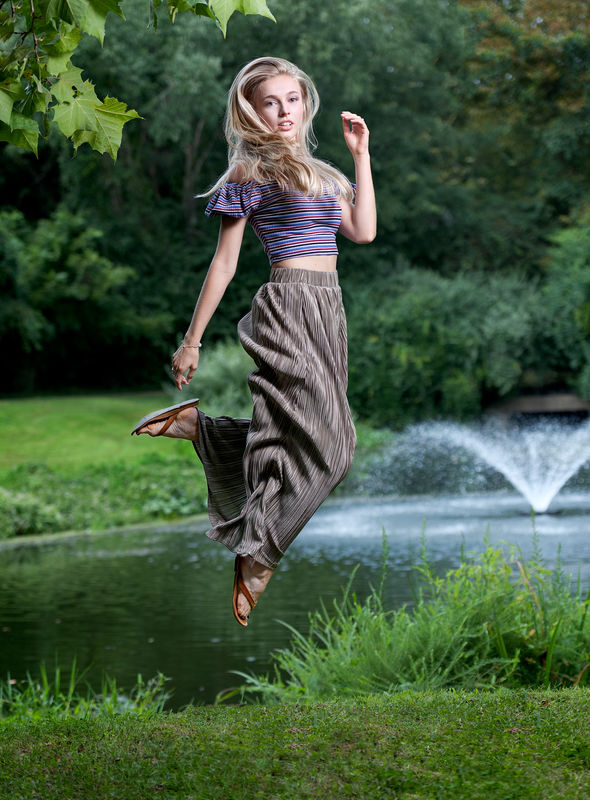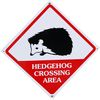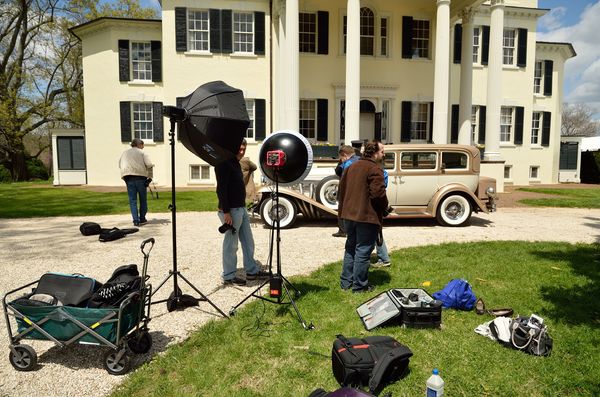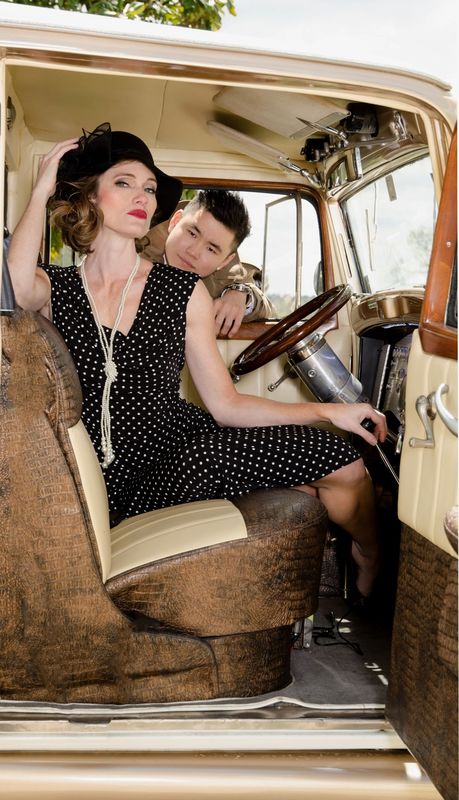Flash Outdoors in Daylight
Jan 23, 2020 11:29:01 #
pdsilen
Loc: Roswell, New Mexico
I have a job coming up where the client insists that I use a flash for all shots which will take place outdoors in the daytime. I have never used a flash outdoors in daylight. Can anybody give me pointers on how to go about it?
Jan 23, 2020 11:45:06 #
Jan 23, 2020 15:06:07 #
pdsilen wrote:
I have a job coming up where the client insists that I use a flash for all shots which will take place outdoors in the daytime. I have never used a flash outdoors in daylight. Can anybody give me pointers on how to go about it?
Sounds like your “client” may know more about photography than... most.
It’s an extremely useful technique in contrasty light typically found outside.
And it’s not a hard thing to get nice results these days with good ttl systems.
(I started shooting back in about 1970 when hardly anything was automatic.)
It’s going to depend on the situation and what your subject is, but I generally set my flash compensation for somewhere around 2 stops under the ambient exposure.
That should get you in the ballpark, maybe even to second base.
Hopefully, you have a good speedlight to use, though the pop-up flash can help a bit.
More here: https://neilvn.com/tangents/best-fill-flash-settings/
And here: https://neilvn.com/tangents/flash-photography-techniques/on-camera-flash-outdoors/
One thing you may run up against with bright situations is maxing out your normal sync setting.
1/200 or 1/250th sec may not be fast enough to handle the bright ambient light you might encounter even at your lowest ISO and a small aperture. In that case, you may want to go into high-speed sync, where your flash puts out a lot of pulses, essentially giving a brief constant light for the duration of the exposure.
More on HSS HERE.
Some camera-speedlight combinations don’t support this though.
It’s ways helpful for us to know what equipment you’re using.
Good luck!
Jan 23, 2020 17:02:08 #
"...It’s ways helpful for us to know what equipment you’re using..." Wisdom...
Really can't provide meaningful guidance other than generic examples without know what tools you have available...
Thanks Jim
Really can't provide meaningful guidance other than generic examples without know what tools you have available...
Thanks Jim
Jan 23, 2020 17:12:29 #
Below is a Fashion Editorial with 4 SB910's through a 72 inch parabolic using HSS...
Phottix Radio Transmitter and Receivers.
Nikon D3x f/3.2 at 1/2500 in Manual Mode AF-S 70-200mm f/2.8 VR II Nikkor
You will likely need lots of firepower for full length in bright sunlight...
Hope this helps pdsilen... or is at least food for thought.
Wishing you all the best with your new client.
.
Phottix Radio Transmitter and Receivers.
Nikon D3x f/3.2 at 1/2500 in Manual Mode AF-S 70-200mm f/2.8 VR II Nikkor
You will likely need lots of firepower for full length in bright sunlight...
Hope this helps pdsilen... or is at least food for thought.
Wishing you all the best with your new client.
.
Jan 23, 2020 17:16:16 #
Jan 23, 2020 17:30:39 #
Thanks for the kind words Michael...
And most of all thank you for your thoughtful donation of a Canon film camera for the use by a needy community college photography student. A dozen year ago I did the same on my journey by donating a lot of my film kit to a local high school's photography program...
What goes around comes around... It's always been that way...
All the best Michael
And most of all thank you for your thoughtful donation of a Canon film camera for the use by a needy community college photography student. A dozen year ago I did the same on my journey by donating a lot of my film kit to a local high school's photography program...
What goes around comes around... It's always been that way...
All the best Michael
Jan 23, 2020 18:17:20 #
GoofyNewfie above has good advice. I usually dial in about -1 to -2 flash compensation to avoid the harsh look of direct flash but still provide fill light.
If you can, use an umbrella like Thomas902 above. It create a much larger light source.
If your client will allow it, you can also use a reflector to fill in shadow areas.
I have a great book that goes over all of those techniques. It's "Portrait Photography From Snapshots to Great Shots" by Erik Valind. You can see some of the pages by doing a "Look Inside" on Amazon.
https://www.amazon.com/Portrait-Photography-Snapshots-Great-Shots/dp/0321951611/ref=sr_1_2?crid=7P4DQTV0TBN4&keywords=portrait+photography+from+snapshots+to+great+shots&qid=1579821416&sprefix=portrait++from+snapshots+to+great+shots%2Caps%2C262&sr=8-2
If you can, use an umbrella like Thomas902 above. It create a much larger light source.
If your client will allow it, you can also use a reflector to fill in shadow areas.
I have a great book that goes over all of those techniques. It's "Portrait Photography From Snapshots to Great Shots" by Erik Valind. You can see some of the pages by doing a "Look Inside" on Amazon.
https://www.amazon.com/Portrait-Photography-Snapshots-Great-Shots/dp/0321951611/ref=sr_1_2?crid=7P4DQTV0TBN4&keywords=portrait+photography+from+snapshots+to+great+shots&qid=1579821416&sprefix=portrait++from+snapshots+to+great+shots%2Caps%2C262&sr=8-2
Jan 23, 2020 18:21:12 #
Thomas902 wrote:
Below is a Fashion Editorial with 4 SB910's through a 72 inch parabolic using HSS...
Phottix Radio Transmitter and Receivers.
Nikon D3x f/3.2 at 1/2500 in Manual Mode AF-S 70-200mm f/2.8 VR II Nikkor
You will likely need lots of firepower for full length in bright sunlight...
Hope this helps pdsilen... or is at least food for thought.
Wishing you all the best with your new client.
.
Phottix Radio Transmitter and Receivers.
Nikon D3x f/3.2 at 1/2500 in Manual Mode AF-S 70-200mm f/2.8 VR II Nikkor
You will likely need lots of firepower for full length in bright sunlight...
Hope this helps pdsilen... or is at least food for thought.
Wishing you all the best with your new client.
.
This looks like you both were having a great time!
Nice work, Thomas.
Jan 23, 2020 18:36:18 #
pdsilen wrote:
I have a job coming up where the client insists that I use a flash for all shots which will take place outdoors in the daytime. I have never used a flash outdoors in daylight. Can anybody give me pointers on how to go about it?
What/who are you shooting?
The best times to use an outdoor flash is when the ambient light is low - usually when you have overcast, or when the angle of the light is closer to the horizon - golden hour AM/PM. You can also get great results in open shade. But in all of the above cases, you'll probably want to "gel" the light to come close to the correct balance between ambient and flash.
I don't care for using an unmodified speed light for fill flash. The light it casts is very specular in nature, and shadows can be harsh. I've used a Paul C Buff White Lightning shot into a 48x48 bounce surface (beaded foam insulation), and gotten nice soft shadows and great light quality - but I used it as a key light. Using high speed sync will give you more options for shutter speed and help keep ISO manageable, but at the cost of flash to subject distance. Buff lights can work with their portable power source - the Vagabond - so that you can have a lot of flexibility. These are popular and fairly easy to rent. Buff also has an 86" umbrella that can be used as a reflective, shoot through or brolly with a diffuser. They also have a nice variety of reasonably priced heads with different output.
If you've never done outdoor speed light work, I suggest you practice with what you've got, or pass on the work.
Jan 23, 2020 19:16:03 #
What Gene51 described above with the Paul C. Buff strobe and Vagabond portable power source is an excellent set up. You can use a wide variety of light modifiers. I attended this photo shoot at Oatlands Manor in Virginia. I used the P.C.B. strobe with beauty dish seen in the photo. Using the direct light blocker disc and diffuser sock with the beauty dish creates beautiful light. You can see the Vagabond power source connected to the bottom of the light stand.
Jan 23, 2020 19:41:50 #
Jan 23, 2020 20:24:28 #
pdsilen wrote:
I have a job coming up where the client insists that I use a flash for all shots which will take place outdoors in the daytime. I have never used a flash outdoors in daylight. Can anybody give me pointers on how to go about it?
I can offer you tips. pointers and some specific techniques, however, I would need more information in order to provide you with information that is specific to the kind of job you are doing and the effects you wish to achieve. If you can provide this information, I can hone in on the best approach.
There are many reasons to combine flash lighting with natural daylight. The two major methods are (1) to provide fill illumination to dense shadows that oftentimes appear in direct sunlight. A lighting ratio between the sunlight and the flash lighting is established thus enabling contrast control and maintaining a highlight/shadow differential that is within the dynamic range of the camera system. In this method, a flash unit or Speedlight is usually mounted on or near the camera on the camera/subject axis. (2) Flash can also employed OFF CAMERA to provide modeling- to create highlight and shadow differentials where the existing light is too flat or non-directional.
Questions: What effect does you or your client expect and how is flash usage going to address the issue?
What is the nature of the job- Portraits, a wedding, sports activities, special-occasion, a fashion shoot, products, large groups, still life?
What equipment are you going to use- Cameras- lenses and flash gear?
I realize you can not predict the weather but what time of day is this job likely to happen? The technique can vary significantly depending on the weather, the volume, and direction of the natural light, and the color temperature of the natural light.
Do you intend to use the camera in manual or one of the automatic exposure modes?
Looking forward to your response.
Jan 24, 2020 05:58:48 #
tcthome
Loc: NJ
Thomas902 wrote:
Below is a Fashion Editorial with 4 SB910's through a 72 inch parabolic using HSS...
Phottix Radio Transmitter and Receivers.
Nikon D3x f/3.2 at 1/2500 in Manual Mode AF-S 70-200mm f/2.8 VR II Nikkor
You will likely need lots of firepower for full length in bright sunlight...
Hope this helps pdsilen... or is at least food for thought.
Wishing you all the best with your new client.
.
Phottix Radio Transmitter and Receivers.
Nikon D3x f/3.2 at 1/2500 in Manual Mode AF-S 70-200mm f/2.8 VR II Nikkor
You will likely need lots of firepower for full length in bright sunlight...
Hope this helps pdsilen... or is at least food for thought.
Wishing you all the best with your new client.
.
Nice work!
Jan 24, 2020 06:15:47 #
tcthome
Loc: NJ
GoofyNewfie wrote:
Sounds like your “client” may know more about phot... (show quote)
Thanks for putting uo the links.
If you want to reply, then register here. Registration is free and your account is created instantly, so you can post right away.









